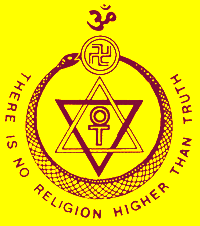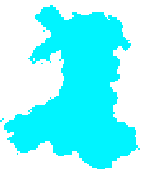Instant
Guide
To Theosophy

Key Concepts
of Theosophy
1) Infinitude
Nature is infinite in space and time -- boundless and eternal,
unfathomable and ineffable. The all-pervading essence of infinite nature can be
called space, consciousness, life, substance, force, energy, divinity -- all of
which are fundamentally one.
2) The finite and the infinite
Nature is a unity in diversity, one in essence, manifold in form. The
infinite whole is composed of an infinite number of finite wholes -- the
relatively stable and autonomous things (natural systems or artefacts) that we
observe around us. Every natural system is not only a conscious, living,
substantial entity, but is consciousness-life-substance, of a particular range
of density and form. Infinite nature is an abstraction, not an entity; it
therefore does not act or change and has no attributes. The finite, concrete
systems of which it is composed, on the other hand, move and change, act and
interact, and possess attributes. They are composite, inhomogeneous, and
ultimately transient.
3) Vibration/worlds within worlds
The one essence manifests not only in infinitely varied forms, and on
infinitely varied scales, but also in infinitely varying degrees of spirituality
and substantiality, comprising an infinite spectrum of vibration or density.
There is therefore an endless series of interpenetrating, interacting worlds
within worlds, systems within systems.
The energy-substances of higher planes or subplanes (a plane being a
particular range of vibration) are relatively more homogeneous and less
differentiated
than those of lower planes or subplanes.
4) Space and time
Just as boundless space is comprised of endless finite units of space, so
eternal duration is comprised of endless finite units of time. Space is the
infinite totality of worlds within worlds, but appears predominantly empty
because only a tiny fraction of the energy-substances composing it are
perceptible and tangible to an entity at any particular moment. Time is a
concept we use to quantify the rate at which events occur; it is a function of
change and motion, and presupposes a succession of cause and effect.
Every entity is extended in space and changes 'in time'.
5) Causation/karma
All change (of position, substance, or form) is the result of causes;
there is no such thing as absolute chance. Nothing can happen for no reason at
all for nothing exists in isolation; everything is part of an intricate web of
causal interconnections and interactions. The keynote of nature is harmony:
every
action is automatically followed by an equal and opposite reaction,
which sooner or later rebounds upon the originator of the initial act.
Thus, all our thoughts and deeds will eventually bring us 'fortune' or
'misfortune' according to the degree to which they were harmonious or
disharmonious. In the long term, perfect justice prevails in nature.
6) Analogy
Because nature is fundamentally one, and the same basic habits and
structural, geometric, and evolutionary principles apply throughout, there are
correspondences between microcosm and macrocosm. The principle of analogy -- as
above, so below -- is a vital tool in our efforts to understand reality.
7) Relativity
All finite systems and their attributes are relative. For any entity,
energy-substances vibrating within the same range of frequencies as its outer
body are 'physical' matter, and finer grades of substance are what we call
energy, force, thought, desire, mind, spirit, consciousness, but these are just
as material to entities on the corresponding planes as our physical world is to
us. Distance and time units are also relative: an atom is a solar system on its
own scale, reembodying perhaps millions of times in what for us is one second,
and our whole galaxy may be a molecule in some supercosmic entity, for which a
million of our years is just a second. The range of scale is infinite:
matter-consciousness is both infinitely divisible and infinitely aggregative.
8) Hierarchy
All natural systems consist of smaller systems and form part of larger
systems. Hierarchies extend both 'horizontally' (on the same plane) and
'vertically' or inwardly (to higher and lower planes). On the horizontal level,
subatomic particles form atoms, which combine into molecules, which arrange
themselves into cells, which form tissues and organs, which form part
of organisms, which form part of ecosystems, which form part of planets,
solar systems, galaxies, etc. The constitution of worlds and of the organisms
that inhabit them form 'vertical' hierarchies, and can be divided into several
interpenetrating layers or elements, from physical-astral to psychomental to
spiritual-divine, each of which can be further divided.
The human constitution can be divided up in several different ways: e.g.
into a trinity of body, soul, and spirit; or into 7 'principles' -- a lower
quaternary consisting of physical body, astral model-body, life-energy, and
lower thoughts and desires, and an upper triad consisting of higher mind
(reincarnating ego), spiritual intuition, and inner god. A planet or star can
be regarded as a 'chain' of 12 globes, existing on 7 planes, each globe
comprising several subplanes.
The highest part of every multilevelled organism or hierarchy is its
spiritual summit or 'absolute', meaning a collective entity or 'deity' which is
relatively perfected in relation to the hierarchy in question. But the most
'spiritual' pole of one hierarchy is the most 'material' pole of the next,
superior hierarchy, just as the lowest pole of one hierarchy is the highest
pole of the one below.
9) From within outwards
Each level of a hierarchical system exercises a formative and organizing
influence on the lower levels (through the patterns and prototypes stored up
from past cycles of activity), while the lower levels in turn react upon the
higher. A system is therefore formed and organized mainly from within outwards,
from the inner levels of its constitution, which are relatively more
enduring and developed than the outer levels. This inner guidance is
sometimes active and selfconscious, as in our acts of free will (constrained,
however, by karmic tendencies from the past), and sometimes it is automatic and
passive, giving rise to our own automatic bodily functions and habitual and
instinctual behavior, and to the orderly, lawlike operations of nature
in general. The 'laws' of nature are therefore the habits of the various grades
of conscious entities that compose reality, ranging from higher
intelligences (collectively forming the
universal mind) to elemental nature-forces.
10) Consciousness and its vehicles
The core of every entity -- whether atom, human, planet, or star -- is a
monad, a unit of consciousness-life-substance, which acts through a series of
more material vehicles or bodies. The monad or self in which the consciousness
of a particular organism is focused is animated by higher monads and expresses
itself through a series of lesser monads, each of which is the nucleus
of one of the lower vehicles of the entity in question. The following monads
can be distinguished: the divine or galactic monad, the spiritual or solar
monad, the higher human or planetary-chain monad, the lower human or globe
monad, and the animal, vital-astral, and physical monads. At our present stage
of evolution, we are essentially the lower human monad, and our task is to
raise our consciousness from the animal-human to the spiritual-human level of it.
11) Evolutionary unfoldment
Evolution means the unfolding, the bringing into active manifestation,
of latent powers and faculties 'involved' in a previous cycle of evolution. It
is the building of ever fitter vehicles for the expression of the mental and
spiritual powers of the monad. The more sophisticated the lower vehicles of an
entity, the greater their ability to express the powers locked up in the
higher levels of its constitution. Thus all things are alive and conscious, but
the degree of manifest life and consciousness is extremely varied.
Evolution results from the interplay of inner impulses and environmental
stimuli. Ever building on and modifying the patterns of the past, nature is
infinitely creative.
12) Cyclic evolution/re-embodiment
Cyclic evolution is a fundamental habit of nature. A period of
evolutionary activity is followed by a period of rest. All natural systems
evolve through re-embodiment. Entities are born from a seed or nucleus remaining
from the previous evolutionary cycle of the monad, develop to maturity, grow
old, and pass away, only to re-embody in a new form after a period of rest.
Each new
embodiment is the product of past karma and present choices.
13) Birth and death
Nothing comes from nothing: matter and energy can be neither created nor
destroyed, but only transformed. Everything evolves from preexisting material.
The growth of the body of an organism is initiated on inner planes, and
involves the transformation of higher energy-substances into lower, more
material ones, together with the attraction of matter from the environment.
When an organism has exhausted the store of vital energy with which it
is born, the coordinating force of the indwelling monad is withdrawn, and the
organism 'dies', i.e. falls apart as a unit, and its constituent components go
their separate ways.
The lower vehicles decompose on their respective subplanes, while, in
the case of humans, the reincarnating ego enters a
dreamlike state of rest and assimilates the experiences of the previous
incarnation. When the time comes for the next embodiment, the reincarnating ego
clothes itself in many of the same atoms of different grades that it had used
previously, bearing the appropriate karmic impress. The same basic
processes of birth, death, and rebirth apply to all entities, from atoms
to humans to stars.
14) Evolution and involution of worlds
Worlds or spheres, such as planets and stars, are composed of, and
provide the field for the evolution of, 10 kingdoms -- 3 elemental kingdoms,
mineral, plant, animal, and human kingdoms, and 3 spiritual kingdoms. The
impulse for a
new manifestation of a world issues from its spiritual summit or
hierarch, from which emanate a series of steadily denser globes or planes; the
One expands into the many. During the first half of the evolutionary cycle (the
arc of descent) the energy-substances of each plane materialize or condense,
while during the second half (the arc of ascent) the trend is towards dematerialization
or etherealization, as globes and entities are reabsorbed into the spiritual
hierarch for a period of nirvanic rest. The descending arc is characterized by
the evolution of matter and involution of spirit, while the ascending arc is
characterized by the evolution of spirit and involution of matter.
15) Evolution of the monad
In each grand cycle of evolution, comprising many planetary embodiments,
a monad begins as an unselfconsciousness god-spark, embodies in every kingdom
of nature for the purpose of gaining experience and unfolding its inherent
faculties, and ends the cycle as a selfconscious god. Elementals ('baby
monads') have no free choice, but automatically act in harmony with one
another and the rest of nature. In each successive kingdom
differentiation and individuality increase, and reach their peak in the human
kingdom with the attainment of selfconsciousness and a large measure of free
will.
In the human kingdom in particular, self-directed evolution comes into its
own. There is no superior power granting privileges or handing out favours; we
evolve according to our karmic merits and demerits. As we progress through the
spiritual kingdoms we become increasingly at one again with nature, and
willingly 'sacrifice' our circumscribed selfconscious freedoms (especially the
freedom to 'do our own thing') in order to work in peace and harmony with the
greater whole of which we form an integral part. The highest gods of one
hierarchy or
world-system begin as elementals in the next.
The matter of any plane is composed of aggregated, crystallized monads
in their nirvanic sleep, and the spiritual and divine entities embodied as
planets and stars are the electrons
and atomic nuclei -- the material building blocks -- of worlds on even
larger scales. Evolution is without beginning and without end, an endless
adventure through the fields of infinitude, in which there are always new
worlds of experience in which to become selfconscious masters of life.
16) Universal brotherhood
There is no absolute separateness in nature. All things are made of the
same essence, have the same spiritual-divine potential, and are interlinked by
magnetic ties of sympathy. It is impossible to realize our full potential,
unless we recognize the spiritual unity of all living beings and make universal
brotherhood the keynote of our lives.
Cardiff
Theosophical Society in
Events Information Line 029 2049 6017
_______________________
Find out more about
Theosophy with these links

Cardiff
Theosophical Society meetings are informal
and there’s always
a cup of tea afterwards
The Cardiff Theosophical Society Website
The National
Wales Theosophy Website
This
is for everybody not just people in Wales
Independent
Theosophy Blog
One liners and
quick explanations
H P Blavatsky is
usually the only
Theosophist that
most people have ever
heard of. Let’s
put that right
The Voice of the Silence Website
Dave’s
Streetwise Theosophy Boards
If you run a
Theosophy Study Group,
please feel free
to use any material on this site
The Most Basic Theosophy Website in the Universe
If you run a
Theosophy Study Group you can use
this as an
introductory handout
An Independent Theosophical Republic
Links to Free Online Theosophy
Study Resources; Courses, Writings,
The main criteria
for the inclusion of
links on this
site is that they have some
relationship
(however tenuous) to Theosophy
and are
lightweight, amusing or entertaining.
Topics include
Quantum Theory and Socks,
Dick Dastardly and Legendary Blues Singers.
No Aardvarks were harmed in the
Includes stuff about Marlon Brando,
Old cars,
Odeon Cinema Burnley, Heavy Metal, Wales,
Cups of Tea, Mrs Trellis of North
Wales.
Llanfairfechan Theosophy Audio
A Theosophical YouTube channel
Llanfairfechan is on the North Wales Coast between Bangor & Conwy
The Spiritual Home of Urban Theosophy
The Earth Base for Evolutionary Theosophy
The Magazine of the Theosophical Society in England
Editor; Susan Bayliss sbayliss@theosoc.org.uk
_____________________
Tekels Park in to be Sold to a
Developer
The Park was
established as a Theosophical Community in the late 1920s
by Theosophical
Visionary, Edward L Gardner.
Concerns are raised about the fate of
the wildlife as
The Spiritual Retreat, Tekels Park in
Camberley,
Surrey, England is to be sold to a developer
____________________
Classic Introductory Theosophy Text
A Text Book of Theosophy By C
What Theosophy Is From the Absolute to Man
The Formation of a Solar System The Evolution of Life
The Constitution of Man After Death Reincarnation
The Purpose of Life The Planetary Chains
The Result of Theosophical Study
Preface
Theosophy and the Masters General Principles
The Earth Chain Body and Astral Body Kama – Desire
Manas Of Reincarnation Reincarnation Continued
Karma Kama Loka
Devachan
Cycles
Arguments Supporting Reincarnation
Differentiation Of Species Missing Links
Psychic Laws, Forces, and Phenomena
Psychic Phenomena and Spiritualism
Karma Fundamental Principles Laws: Natural and Man-Made The Law of Laws
The Eternal Now
Succession
Causation The Laws of Nature A Lesson of The Law
Karma Does Not Crush Apply This Law
Man in The Three Worlds Understand The Truth
Man and His Surroundings The Three Fates
The Pair of Triplets Thought, The Builder
Practical Meditation Will and Desire
The Mastery of Desire Two Other Points
The Third Thread Perfect Justice
Our Environment
Our Kith and Kin Our Nation
The Light for a Good Man Knowledge of Law The Opposing Schools
The More Modern View Self-Examination Out of the Past
Old Friendships
We Grow By Giving Collective Karma Family Karma
National Karma
India’s Karma
National Disasters
Try these if you are looking for a local
group
UK Listing of Theosophical Groups

General pages
about Wales, Welsh History
and The History
of Theosophy in Wales
Wales is a
Principality within the United Kingdom
and has an eastern
border with England. The land
area is just over
8,000 square miles. Snowdon in
North Wales is the
highest mountain at 3,650 feet.
The coastline is
almost 750 miles long. The population
of Wales as at the
2001 census is 2,946,200.
__________________________________________
into categories
and presented according to relevance of website.